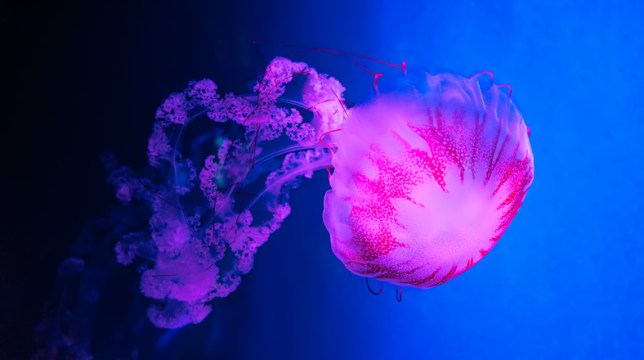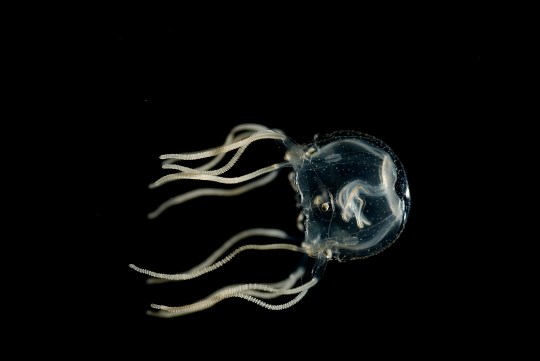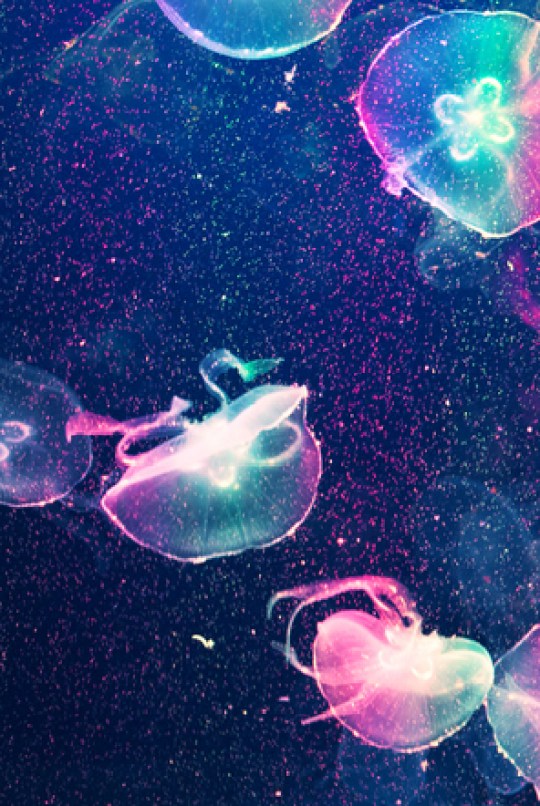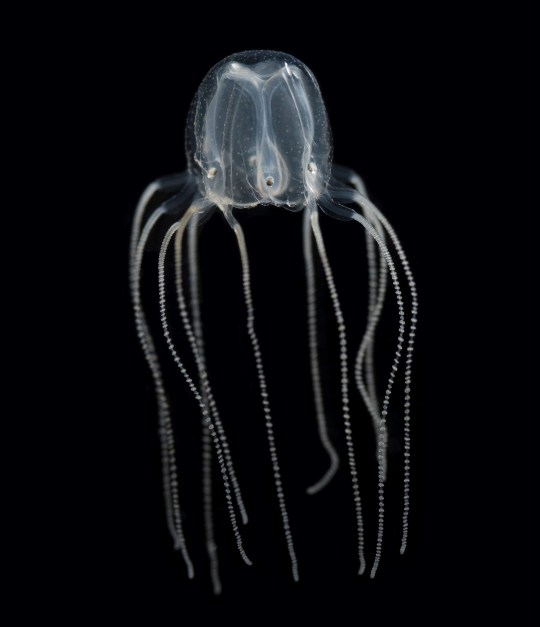Jellyfish are much smarter than previously thought, reveals new research – despite only having 1,000 nerve cells and no centralised brain.
The study showed that poisonous Caribbean box jellyfish can learn at a far more complex level than ever imagined.
Scientists say their findings, published in the journal Current Biology, change our fundamental understanding of the brain – and could reveal more about our own brains and the process of dementia.
Jellyfish have been around for more than 500 million years but, until now, they’ve been thought of as simple creatures with very limited learning abilities.
The prevailing scientific opinion is that more advanced nervous systems equate with more advanced learning potential in animals.
Jellyfish and their relatives, collectively known as cnidarians, are considered to be the earliest living animals to develop nervous systems – have fairly simple ones with no centralised brain.
Neurobiologist Professor Anders Garm has been researching box jellyfish, a group commonly known for being among the world’s most poisonous creatures, for more than a decade.
The fingernail-sized species lives in Caribbean mangrove swamps where they use their impressive visual system, including 24 eyes, to hunt for copepods – tiny crustaceans – among the roots.
‘It was once presumed that jellyfish can only manage the simplest forms of learning, including habituation – the ability to get used to a certain stimulation, such as a constant sound or constant touch,’ said Professor Garm, from the University of Copenhagen in Denmark.
‘Now, we see that jellyfish have a much more refined ability to learn, and that they can actually learn from their mistakes. And in doing so, modify their behaviour.’
He said one of the most advanced attributes of a nervous system is the ability to change behaviour as a result of experience – to remember and learn.
As the tiny box jellyfish approach the mangrove roots, they turn and swim away. Should they veer too soon, they won’t have enough time to catch any copepods. But if they turn too late, they risk bumping into the root and damaging their gelatinous bodies.
Professor Garm explained that assessing distances is crucial for them – and the research team discovered that contrast is the key.
‘Our experiments show that contrast – how dark the root is in relation to the water – is used by the jellyfish to assess distances to roots, which allows them to swim away at just the right moment,’ he said.
‘Even more interesting is that the relationship between distance and contrast changes on a daily basis due to rainwater, algae and wave action.
“We can see that as each new day of hunting begins, box jellyfish learn from the current contrasts by combining visual impressions and sensations during evasive manoeuvres that fail.
‘So, despite having a mere 1,000 nerve cells – our brains have roughly 100 billion – they can connect temporal convergences of various impressions and learn a connection, or what we call associative learning.
‘And they actually learn about as quickly as advanced animals like fruit flies and mice.’
The findings break with previous scientific perceptions of what animals with simple nervous systems are capable of.
‘For fundamental neuroscience, this is pretty big news,’ said Professor Garm. ‘It provides a new perspective on what can be done with a simple nervous system. This suggests that advanced learning may have been one of the most important evolutionary benefits of the nervous system from the very beginning.’
The research has also shown where the learning is happening in the box jellyfish.
The team said the discovery has given them unique opportunities for how to study the precise changes that occur in a nerve cell when it is involved in advanced learning.
‘We hope that this can become a supermodel system for looking at cellular processes in the advanced learning of all sorts of animals,’ said Professor Garm.
‘We are now in the process of trying to pinpoint exactly which cells are involved in learning and memory formation. Upon doing so, we will be able to go in and look at what structural and physiological changes occur in the cells as learning takes place.’
If the team can pinpoint the exact mechanisms in jellyfish involved in learning, the next step will be to find out whether it applies specifically to them or if it can be found in all animals.
‘Eventually, we will look for the same mechanisms in other animals, to see if this is how memory works in general,’ said Professor Garm.
‘Understanding something as enigmatic and immensely complex as the brain is in itself an absolutely amazing thing. But there are unimaginably many useful possibilities.
‘One major problem in the future will undoubtedly be various forms of dementia.
‘I don’t claim that we are finding the cure for dementia, but if we can gain a better understanding of what memory is, which is a central problem in dementia, we may be able to lay a building block to better understand the disease and perhaps counteract it.’
MORE : Jellyfish-like sea creature could hold key to fountain of youth
MORE : Dementia study reveals 11 signs that show you’re at risk in next 14 years
Get your need-to-know
latest news, feel-good stories, analysis and more
This site is protected by reCAPTCHA and the Google Privacy Policy and Terms of Service apply.













